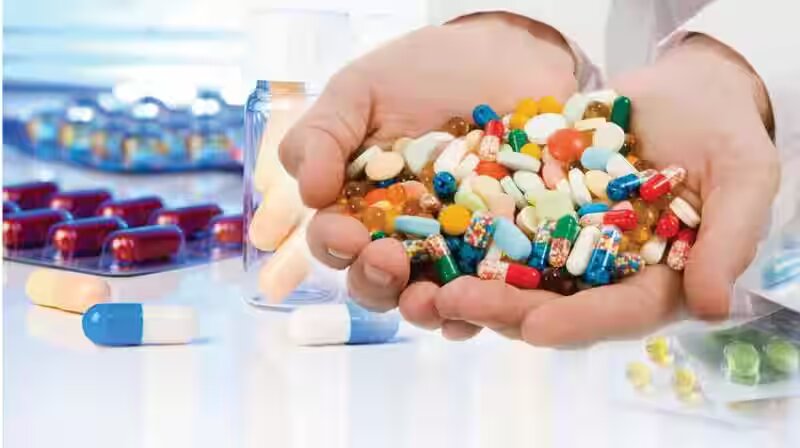Introduction
Life-saving drugs are vital for treating serious health problems and helping people live healthier lives. These medications can stop, treat, or cure diseases that could otherwise be very dangerous. This guide will explain what life-saving drugs are, how they help us, and some challenges related to their use.
What Are Life-Saving Drugs?
Life-saving drugs are medicines designed to handle serious health issues. They come in different types, each for treating specific problems:
- Antibiotics: These drugs fight bacterial infections. For example, penicillin is used to treat infections like strep throat, and ciprofloxacin helps with other bacterial infections. Pomalidomide manufacturers produce this drug, which is used in the treatment of multiple myeloma and other cancers, ensuring its availability for patients in need.
- Antivirals: These medicines target viruses. Oseltamivir (Tamiflu) helps with the flu, and zidovudine (AZT) helps manage HIV/AIDS.
- Cancer Drugs: These drugs treat cancer by targeting and killing cancer cells. Cyclophosphamide is one such drug, and there are also targeted therapies like imatinib that focus on specific molecules involved in cancer.
- Heart Medicines: These help with heart problems. Aspirin prevents heart attacks by reducing blood clots, and statins lower cholesterol to prevent heart disease and stroke.
- Diabetes Medications: These drugs manage diabetes by controlling blood sugar levels. Insulin is a well-known example, and metformin helps improve insulin sensitivity.
- Respiratory Medicines: These help with breathing issues. Albuterol is a bronchodilator that helps open airways, and corticosteroids like fluticasone reduce inflammation in the airways.
How Do Life-Saving Drugs Help Us?
Life-saving drugs have a big impact on our health in several ways:
- Preventing Diseases from Getting Worse: They help stop chronic conditions from worsening. For example, antiretroviral drugs for HIV keep the virus under control, preventing it from progressing to AIDS.
- Reducing Deaths: Antibiotics and vaccines have saved many lives by treating infections and preventing diseases. Vaccines can stop illnesses like measles, while antibiotics treat infections such as pneumonia.
- Improving Quality of Life: These drugs make it easier to live everyday life. Heart medicines can reduce chest pain and make daily activities easier, while respiratory drugs help people breathe better and be more active.
- Increasing Lifespan: By managing chronic diseases effectively, these drugs help people live longer. Insulin for diabetes helps prevent serious complications, extending life expectancy.
Examples of Life-Saving Drugs
- Penicillin: Discovered in 1928, penicillin was the first antibiotic and has been used to treat many bacterial infections. It marked a major breakthrough in medicine.
- Insulin: Used since the 1920s, insulin is crucial for people with diabetes to control blood sugar levels, transforming diabetes treatment and improving lives.
- Chemotherapy Drugs: Cyclophosphamide is used to treat various cancers and has greatly improved survival rates.
- Statins: These drugs lower cholesterol and help prevent heart attacks and strokes. They are an important part of managing heart health.
- Antiretrovirals: Zidovudine is used to treat HIV/AIDS, helping people live longer and healthier lives by controlling the virus.
Visit here: Specialitymedz
Challenges and Considerations
While life-saving drugs are crucial, there are some challenges:
- Side Effects: Some drugs can cause side effects, from mild to severe. For example, chemotherapy can cause nausea and fatigue. It’s important to manage these side effects with your doctor’s help.
- Access and Cost: Not everyone can easily get these medicines. High costs and limited availability can be barriers. Efforts are needed to make these drugs more accessible and affordable.
- Taking Medicine as Prescribed: For many drugs to work properly, they must be taken exactly as directed. Missing doses or not following instructions can make treatments less effective.
- Drug Resistance: Some germs can become resistant to drugs over time, making treatments less effective. Ongoing research is needed to keep these drugs effective.
- Ethical Issues: There are ethical concerns about drug pricing, patents, and clinical trials. It’s important to ensure that drugs are developed and distributed fairly.
Future Directions
The future of life-saving drugs includes new developments and improvements:
- Personalized Medicine: This approach tailors treatment based on individual genetic profiles, which can lead to more effective and targeted therapies.
- Biotechnology Advances: New technologies are creating new treatments for previously untreatable conditions.
- Improving Access: Efforts are needed to make sure that all people can access these essential medications.
- Managing Resistance: Research is focused on overcoming drug resistance to ensure treatments remain effective.
Conclusion
Life-saving drugs are essential for treating serious health problems and improving our quality of life. They help prevent diseases, reduce deaths, and make it easier for people to live healthier lives. As medicine continues to advance, addressing the challenges associated with these drugs and making them accessible to everyone will be important for maintaining and improving global health.

Leave a Reply